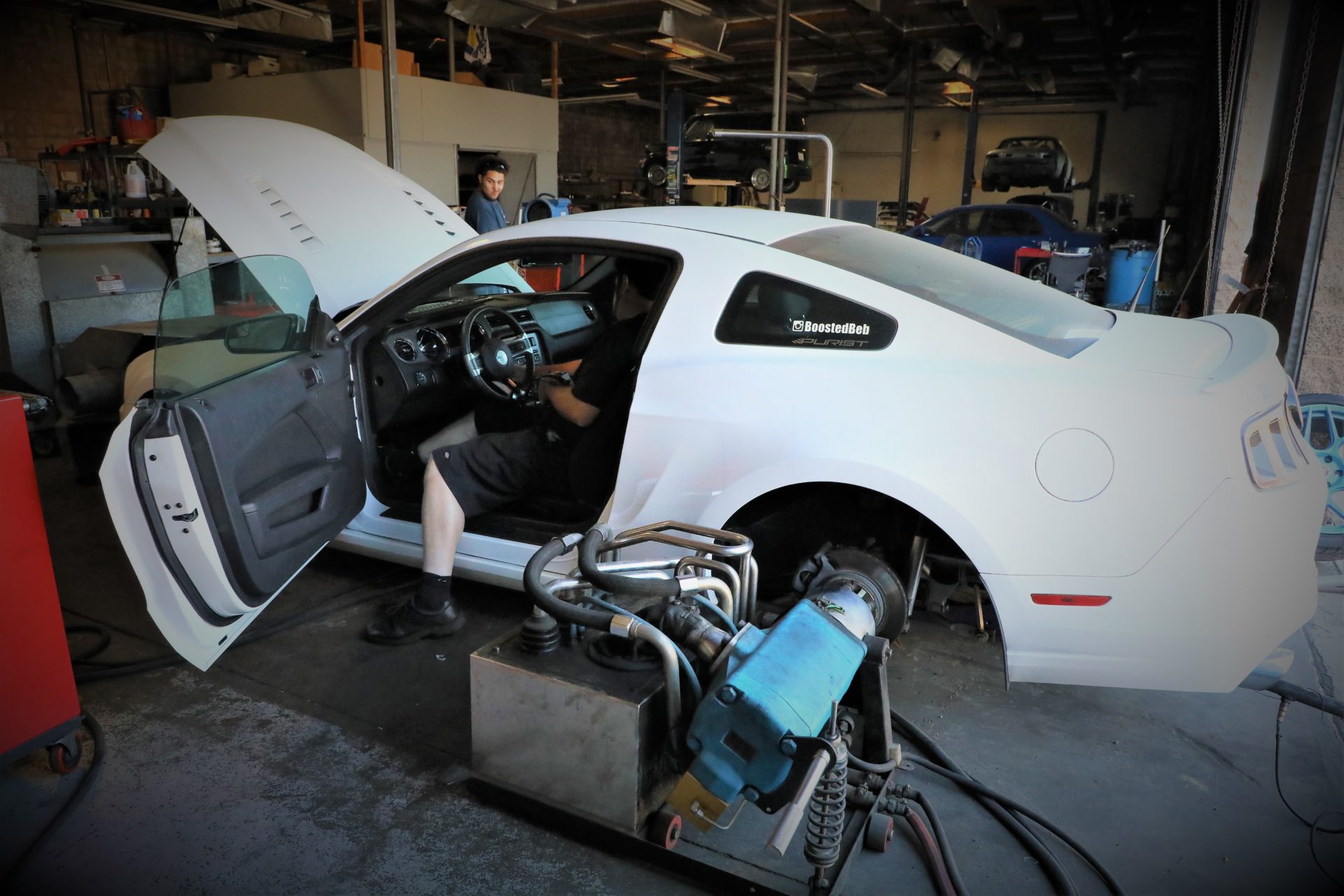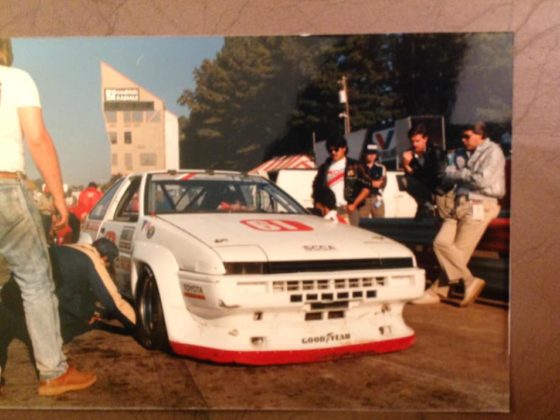

When base lining our S197 Ford Mustang project Shawn noted that our rev limit was set really low. Even though we had built the top end of our Coyote engine to withstand 8,000 rpm. The first thing Shawn did was to set our rev limit to a conservative 7,800 rpm. With our initial pulls Shawn also noted that previous tuners had the air-fuel ratio curve down pretty well, but there was way too much timing. The car was detonating badly in two places on the map. Shawn trimmed the timing to eliminate the detonation.

Our speed density actual load vs calculated load table was way off. This was causing things like the erratic traction control operation, poor and inconsistent throttle response and partially responsible for the low power numbers. The ECU was fighting to correct the engines parameters to the actual conditions. Shawn edited these tables as well as the torque tables so the engine could run solidly within the programmed parameters, with the ECU doing minor corrections as designed.
Shaw told us the modern Ford ECU has many fuel and spark maps and that typically, when tuned correctly, the engine runs mostly in 5 or so of these maps. Our car was going all over the place into maps that are not used much as the ECU struggled to correct the mismatch in actual vs calculated load. With the mismatch, our throttle was only opening about 70% as well. Once Shawn corrected this, the car started to settle down and come to life. Shawn explained that our prior tuners may have had a very early version of HP tuners or didn’t understand how to deal with some of the complexities of a late model ECUs.
Next Shawn did cam timing sweeps by fully retarding, then advancing the intake, then exhaust cam in 5-degree increments. By comparing the overlapping pulls, Shawn could tune the cam timing maps for the intake and exhaust cams respectively. Now our car was starting to make some serious power, especially on the bottom end! Once that was done, Shawn went back and touched up the calculated load and we were done.

Thanks to Church Automotive Testing, the new Ford Racing dual-blade throttle body and the power of the HP Tuners tuning suite, our Coyote engine is now putting out close to 500 wheel horsepower! More amazing are the gains from idle to 3,000 rpm. We gained over 100 lb/ft of torque and 40 hp over a large area here. This is an area of the powerband where you might spend a decent amount of time while driving on the street.
Driving the car was amazing! The soggy bottom end and flaccid irregular throttle response are completely gone. Instead, you get a savage and instant power delivery that effortlessly breaks the wheels loose in first, second and third gears. Its hard “head for the crowds and poles” power! Power that makes any Mustang crave flesh. Now our idle is rock steady, but still with a slight lope from the Ford Racing cams. It sounds pretty cool. The traction control now works as it is supposed to as well.
Now our engine really feels like it’s supposed to after all of the upgrades we’ve performed. Driving the car has been transformed from frustrating to really fun. Now we have to figure out how to control all this power and get our S197 project to hook up better.
Sources




4 comments
Just a couple questions:
1) Regarding the ford racing (big oval) TB, are you saying that with even the smallest throttle input it was allowing two much air for the ECU to compensate, or was the poor running more a factor of the other tuners inability to map the ECU?
2) I guess this depends on your answer to the first question, but if the cause of the poor idle, lack of power, …etc was tuner based, why not go back to the bigger throttle body?
The throttle body is way too big for the size of the engine. Ford has even discontinued it.
It baffles me how people can confidently take money to tune someone else’s car if they can’t even get the basics right. There’s no excuse on a modern engine with built-in knock detection to have a timing table advanced enough to cause knock. I understand the ECU in that mustang is much more complex than the Megasquirt in my Miata, but the basics of solid reference VE tables, timing, accel/decel enrichment and idle control are basic things that a tuner needs to know.
You’re missing the fact that there are multiple VE maps. GenIV GM small block V8 engines don’t even use VE maps. Instead there are a bunch of 2D tables. EFILive did come up with a GUI called virtual VE, so the tuner is able to treat the tune as though it had an actual VE map. You then allow EFILive to generate all the changes to the 2D tables and voila, car is tuned. I can’t imagine what the GenV stuff is like. Comparing standalones or even early OBDII computers to what’s out there now is apples and dog shit. I’m with you on the knock, that’s unacceptable, but I could totally see how everything else that was wrong could have easily been entirely due to outdated software like Mike said.